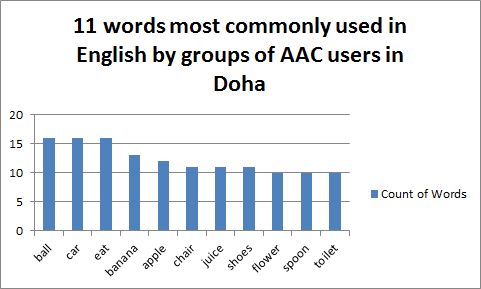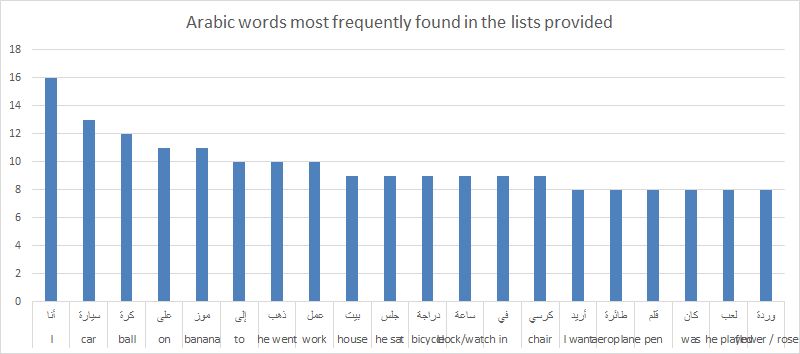This report comes thanks to Amatullah Kadous
On May 12th, 2015 the Mada Assistive technology Center hosted the first voting session for the second batch of symbols. The session was attended by 10 voters, including 3 Mada staff members, 3 speech therapists from the Child Development Centre in West Bay, 3 staff members from Shafallah special needs school and the Head of the Speech Therapy Department at Qatar Academy.
Via the online symbol management “quick vote system”, participants voted on 66 symbols that had been developed or adapted from the ARASAAC symbol such as “drive” or “Allah” (God).
There was a debate as to the importance of words used in the classroom with older students and those words or phrases needed for daily communication. Some felt that there should be a mix at this stage despite the fact that the words had been provided by schools. Dr. Imad Deeb a speech therapist specializing in developing Arabic literacy programs for people with special needs made the comment that “there are 3 different levels of vocabulary: General academic vocabulary, Specific academic vocabulary and the common vocabulary; (some of) the words presented today are academic and from the MSA (from texts) and the MSA doesn’t represent any dialect, nobody uses these words to communicate, the vocabulary presented today is so different than the level of a child with disability. The words are abstract and complex, they don’t match the needs of our children”

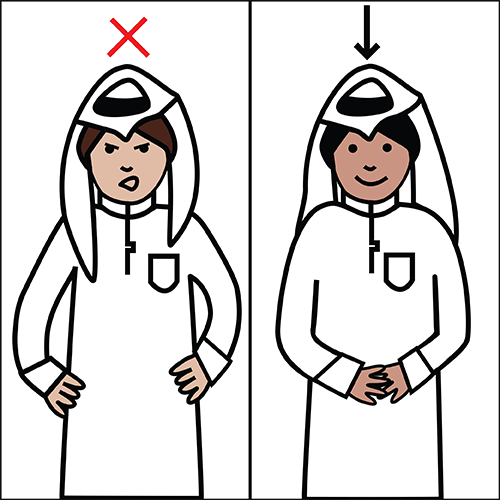
An example of this were the words “collective response” and “manners” (translated from the Arabic list) provided by a school covering a wide age range (K-12). Many voters said that they had never used such a symbol with the AAC users they were supporting, one voter stating, “It’s a very abstract word, very difficult to explain it to a child, I’ve worked with children for more than 20 years, I’ve never used this word, why is it in your list?” But if the Arabic had been adapted to represent ‘everyone answer’ and ‘please be good’ would there have been a different reaction.
“Woe to the makers of literal translations, who by rendering every word weaken the meaning! It is indeed by so doing that we can say the letter kills and the spirit gives life.” Voltaire
It was time to re-evaluate the methods used to collect the core vocabularies. It was decided that different lists may have to be targeted at different voters in the AAC forum whilst prioritising the core communication vocabularies. For example 3 lists from a specific special needs school in Qatar had come from the Arabic department who had come together and created the vocabulary based on words commonly used in text books and concepts from Islamic Studies – these were the lists that contained words such as collective response, manners, memorise and even monotheism. All the other lists were based on symbols used in conversation or taken directly from classrooms including visual timetables, communication boards, grids, what speech therapists working with AAC users perceived as the most commonly used symbols and symbols used for signage around the special needs school. By keeping the 3 curriculum based lists separate the final core vocabulary list reflected a communication based vocabulary and any more complex words or word phrases would be kept for a separate higher level literacy based vocabulary.
The team also discussed the possibility of arranging for a group of users, parents and professionals supporting AAC users to vote on the final core vocabulary; to add and remove words they believed should or shouldn’t be in place. In this way there would be a local consensus that the collected data was valid based on usage. This was actually a suggestion that originally came from one of the voters “you have to set your proper list of vocabulary and invite us to vote on the list before starting to create new symbols” ! It highlights the value of using a participatory approach and including users and their supporters in the decision making processes.
There was also another discussion about the clothing type to be used throughout the Arabic Symbol dictionary i.e. traditional Qatari clothing (black dress and hijab for women and white dress and headpiece for men) or clothing more suitable for the broader Arab region (coloured clothing with hijab for women). One speech therapist explained how her Egyptian student would not be able to identify with the character in our symbol that was wearing Qatari clothing. She also questioned what the scenario would be like for a Qatari AAC user who travelled abroad. Her suggestion was that we use stick figures. The team had already discussed this issue at the beginning of the symbol designing process, and decided that this problem needed to be put to those who would be using the symbols most. A symbol survey was created which 50 therapists, parents and special needs teachers completed regarding their preference for clothing type (Qatari vs Arab clothing) and drawing type (stick figures vs full drawing of male and female characters). The results noted in the previous blog entry showed a preference for clothing that represented the broader Arab region and full drawing depictions as opposed to stick figures.
The team has realized how passionate everyone is for their opinions to be heard as all have valid rationales for their preferences. In order for the dictionary to be useful and for it to be used, it is essential to cater for the broadest range of users and supporters possible. it has been decided to incorporate characters with Qatari clothing in the situation where there are more than one character but leaving the majority of characters in Arab clothing. Furthermore, it will be possible to make as many stick figure options available via the ARASAAC symbol lists as well as those developed for a research project by one of the team members as part of her Master’s degree from the University of St. Joseph in Lebanon.

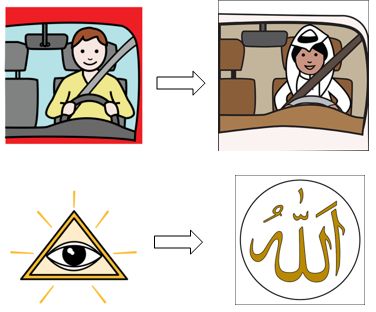
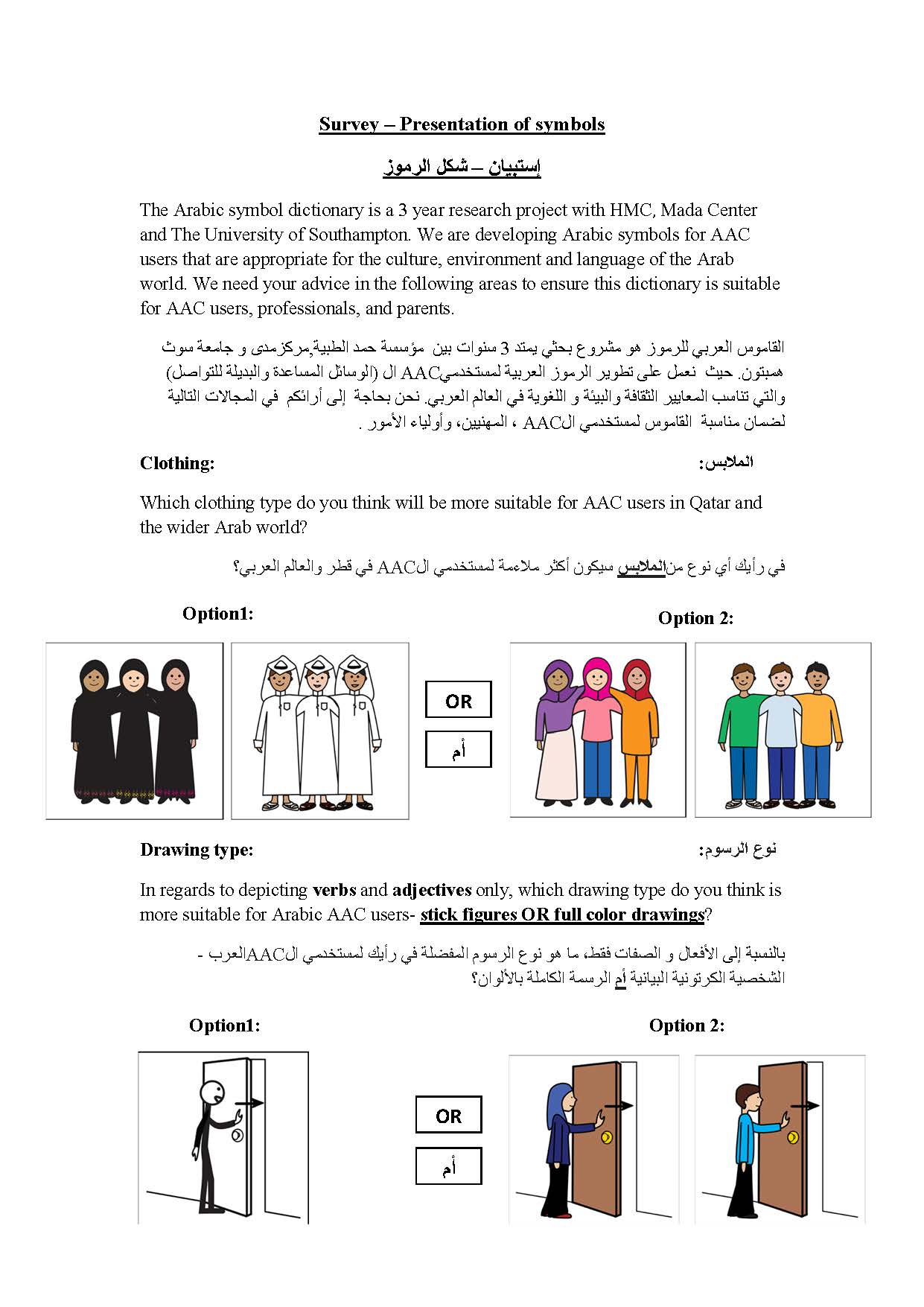 Because there have been some concerns about the way action symbols for verbs are portrayed and the type of clothing needed across all the symbols it was decided that we needed to increase the number of people involved in making these decisions so a survey is being sent out across several organisations with AAC users in the hope that we receive clear direction.
Because there have been some concerns about the way action symbols for verbs are portrayed and the type of clothing needed across all the symbols it was decided that we needed to increase the number of people involved in making these decisions so a survey is being sent out across several organisations with AAC users in the hope that we receive clear direction.